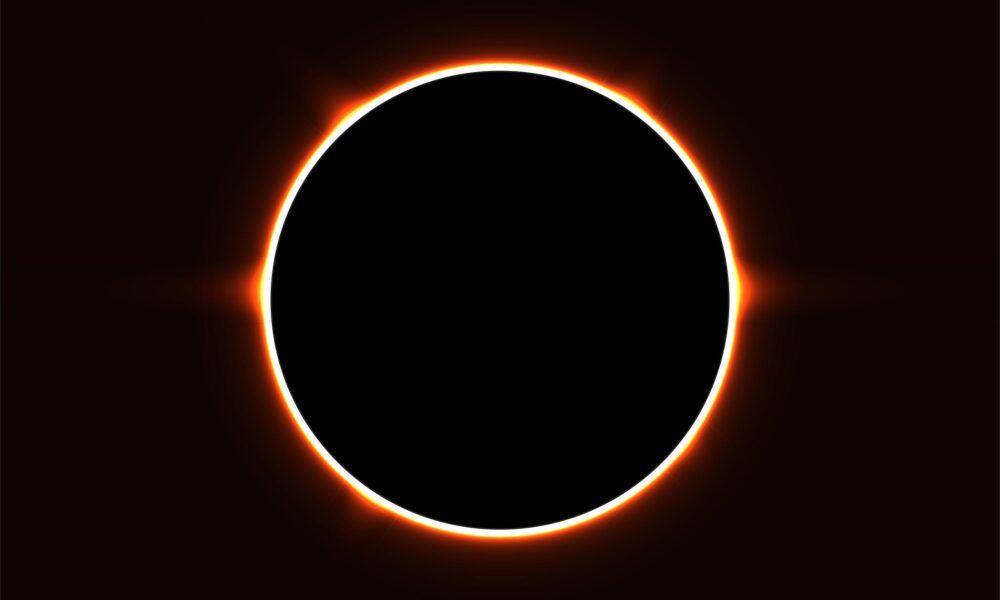On April 8, a celestial spectacle will appear in the skies above North America as the moon passes between the Earth and the sun, resulting in a total solar eclipse. Its totality—when the moon completely covers the sun—will occur at around 3:20 p.m. and last approximately one minute and 27 seconds.
As anticipation builds, it is essential to understand the nuances of the extraordinary event and how to view the total solar eclipse safely.
What is a total solar eclipse?
A total solar eclipse occurs when the moon completely blocks the sun, covering what’s called the sun’s “solar disk.” This allows observers in the centre of the moon’s shadow to briefly see the sun’s outer atmosphere, the corona, which is normally too dim to see when the bright solar disk is uncovered. Despite the vast size difference between the sun and the moon, their apparent sizes—how they appear relative to each other from the perspective of an observer on Earth—align perfectly during an eclipse.
What will I see?
Assuming sunny weather, observers can expect to see a “diamond ring effect” just before and after totality, as the sun’s edge peeks through the lunar valleys, creating a stunning ring of light that resembles a diamond wedding band.
The moon’s shadow actually has two main components: The darker inner shadow, called the umbra, and a fainter outer shadow, called the penumbra. The sun’s light is completely blocked within the umbra, while only partially blocked in the penumbra—this is the part that shines through to form the “diamond ring.”
As the earth rotates and the moon follows its orbit, the moon’s shadow traces a path across the earth’s surface known as the “eclipse path.” Within this area is a smaller path traced by the sun’s umbra, called the path of totality.
In Canada, the Eastern and Atlantic provinces, including Ontario, Quebec, New Brunswick, Nova Scotia, Prince Edward Island, and Newfoundland, will experience moments of darkness as the eclipse’s path of totality passes through them. Luckily for us, the path of totality just barely covers McGill, missing Laval and parts of northern Montreal.
Where and when can I view the eclipse at McGill?
On April 8, from 1 p.m. to 4:30 p.m., members of the Trottier Space Institute are hosting an eclipse-watching event at the lower field on campus. The event will include a variety of activities related to the physics and astronomy of eclipses.
How do I view it safely?
Carolina Cruz-Vinaccia is the Program Administrator at the Trottier Space Institute and the event coordinator for the eclipse-watching event. She is in charge of science engagement efforts and runs outreach programs for the Montreal community. Cruz-Vinaccia advises viewing the eclipse with eclipse glasses. Looking directly at the sun without the appropriate protection can lead to serious vision problems and potentially irreversible damage to the retina.
“What the glasses do is filter out the part of the light that is harmful to your eyes,” Cruz-Vinaccia explained in an interview with The Tribune. “You cannot stare directly at the sun with anything but the glasses, as they use special filters and lenses that are very opaque.”
Cruz-Vinaccia offered some solutions for those who cannot get access to eclipse glasses. She advised constructing an at-home pinhole projector by using household items like colanders or food strainers. These makeshift devices allow sunlight to pass through tiny holes, projecting an image of the eclipse onto a surface for observation.
What if I miss it?
“It’s once in a lifetime for most of us,” Cruz-Vinaccia said. “We get partial eclipses much more regularly, but total eclipses are very rare, particularly over highly populated areas like Monreal. That’s what makes this one so special.”
Marking 50 years since the last total solar eclipse in Quebec, Cruz-Vinaccia encourages McGill students and members of the community to enjoy the rare celestial event. So, gather your eclipse glasses and homemade projectors to witness this once-in-a-lifetime experience.








